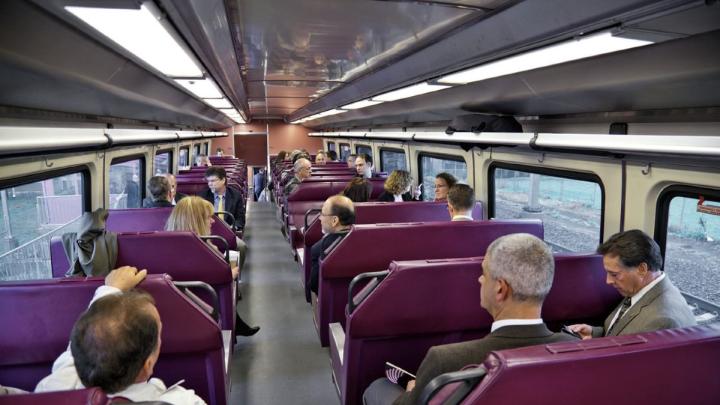Riding the train to work every day in Chicago, Ryan Enos began to notice an intriguing pattern: at a certain downtown station, all the African-American riders seemed to get off just as Caucasian riders climbed aboard. “It was like a meeting of two worlds, where you could feel this palpable tension between two communities that otherwise are strictly segregated from each other, but occasionally come into close proximity,” he says.
Now an assistant professor of government, Enos at the time was teaching high school in the historically poor and almost entirely African-American neighborhood of Englewood. The experience of moving between two worlds and thinking about how that reality was an overwhelming presence in people’s lives, shaping everything from the way they view others to their own political views, led Enos to pursue the study of “racial threat”—how people react with uncertainty to those of a different race—in graduate school and his subsequent professional career. In his most recent paper, “What the Demolition of Public Housing Teaches Us About the Impact of Racial Threat on Political Behavior,” he explores how individuals’ politics are affected by the context in which they live.
Between 2000 and 2004, Enos and a group of Harvard graduate students studied a public-housing reconstruction project in Chicago that caused the displacement of more than 25,000 African Americans, many of whom had previously lived in close proximity to white voters. After the African Americans moved out of the voting district, a startling effect became apparent: the white voters’ turnout dropped by 12 to 15 percentage points, leading Enos and his team to believe that white residents’ previously higher levels of civic engagement were in large part caused by feelings of racial threat.
“That’s a lot of people. Political parties work really hard to try and turn out two or three percentage points of people—this is a 15 percentage point drop, so it’s a huge swing in who votes and who doesn’t,” Enos notes. “What it looks like…[is that] when [whites] were living next to these black neighbors, they were ‘racially threatened.’ The presence of these African Americans was affecting their psychology in some way and causing them to vote in a certain way.”
After dividing voters by race, Enos and his team measured how far they lived from the demolished housing projects and then estimated voting patterns, using a method called ecological inference (the process of using aggregate data to draw conclusions about individual-level behavior) developed by Weatherhead University Professor Gary King.
Enos found that the way people voted changed according to their proximity to housing projects: whites who lived nearby were voting for Republicans at a higher rate than whites living in other areas. “After those projects came down, they all voted Republican at the same rate,” Enos adds. “It looked like the presence of those housing projects caused them to vote Republican.”
Drawing on his Chicago experience, Enos has submitted for publication a report on an experiment in which two native Spanish-speakers were randomly inserted, for a period of days, into the daily routines of mostly white passengers on Greater Boston’s commuter rail system. Surveying people on the train platforms about their views on immigration policy both before and after they were exposed to the Spanish-speakers, he found a significant rise in exclusionary attitudes among those interviewed. “The people riding the train were much more likely to say things like ‘We should restrict immigration from Mexico’ or ‘We should send the children of undocumented immigrants back to Mexico’ after they were exposed to the Spanish speakers,” Enos reports. “This indicates that this feeling of racial threat is causing them to become sharply exclusionary.”
He notes, however, that the initial response to this racial threat eventually gave way to more tolerant racial attitudes. After 10 working days, the team went back and re-interviewed the same passengers, and found their stances on immigration policy had become more liberal. “What’s really good about public transportation is it exposes people to people, and they have this opportunity get to know each other, like you do when you enter grade school,” he says. “While there is clearly this initial threat, it can lead to improved attitudes over time.”
Overall, Enos adds, the point of this research is to start a national conversation on a topic that is often ignored. “It raises the main question of how do we respond to other groups?” he says. “It’s important for Western societies, especially now, because we’re becoming more and more diverse and we want to know how that affects things like our politics and how well we’re going to function as a society.”







